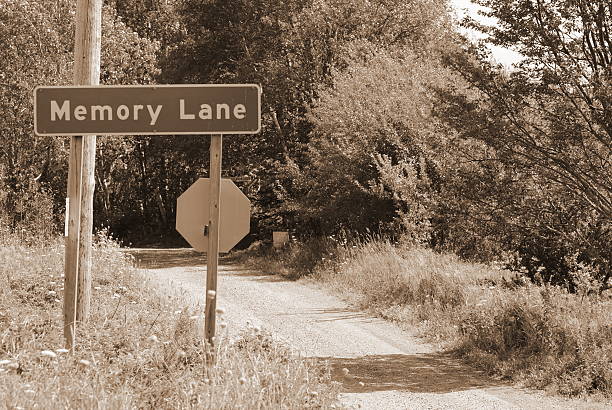Walking down memory lane is more than just a phrase—it is a heartfelt journey through the moments that define our lives. When we talk about memory lane, we are inviting ourselves to revisit the experiences, emotions, and stories that have shaped who we are. In an age where everything moves quickly, creating a tangible memory lane allows us to pause, reflect, and treasure our personal histories. By preserving memories through books, videos, and storytelling, we can keep our past alive and meaningful for years to come.
Preserving your memory lane is essential not only for nostalgia but also for mental and emotional well-being. It strengthens your identity and connects you to family, friends, and future generations. These preserved moments become a gift that continues to give joy and insight. Whether you prefer the tactile feel of a photo album or the dynamic nature of a video, building your memory lane is an enriching way to celebrate your life story.
The Science Behind Memory Lane
Understanding how memory works helps us appreciate the importance of walking down memory lane. Our brains hold different types of memories that contribute to this experience. Episodic memory stores personal life events—the very moments we cherish on memory lane. Meanwhile, semantic memory holds facts and general knowledge, providing context to those memories. Skills like riding a bike fall under procedural memory, while working memory helps us process new information temporarily.
Memory lane is also enriched by less conscious types of memory, like implicit memory, which affects how we react based on past experiences, even when we aren’t actively recalling them. Some people have remarkable abilities like eidetic memory, allowing them to vividly recall images, or photographic memory, though this remains a debated phenomenon. Despite natural challenges like short term memory loss, consciously preserving memories helps keep your memory lane vibrant and accessible.
Tools and Techniques to Build Your Memory Lane
Creating a meaningful memory lane involves selecting the right tools to capture and preserve your stories. Physical keepsakes like beautifully bound books and photo albums serve as timeless reminders of your journey. These traditional methods allow you to physically hold your memories, making the experience deeply personal and nostalgic.
In today’s digital age, videos and storytelling apps add a modern twist to memory lane. Capturing moments on video allows you to see and hear loved ones, making memories more vivid. Interactive memory games, such as the popular Google memory game, can also be a fun way to exercise your brain, enhancing your ability to recall past moments and stay mentally sharp.
Memory foam products like mattresses and pillows, while seemingly unrelated, symbolize comfort and support—qualities your memory lane should embody. Just as memory foam adapts and cushions, your memory lane cushions your mind, providing comfort as you revisit your life’s chapters.
Emotional and Cultural Significance of Memory Lane
Memory lane is not just about recording facts; it is an emotional journey that connects us to our past. Revisiting memories nurtures mental health by offering a sense of continuity and belonging. Our memories shape our identity, influencing how we see ourselves and relate to the world around us. The persistence of memory is a powerful force, anchoring us to our roots and helping us navigate life’s changes.
Culturally, memory lane appears frequently in art, literature, and music, reflecting its universal appeal. Films and songs that explore memory lane evoke deep emotions, reminding us of shared human experiences. Special occasions like Mother’s Day inspire many to create memory lanes, reconnecting families and honoring legacies through shared stories.
Practical Tips for Creating Your Own Memory Lane
Starting your memory lane project can be simple and rewarding. Begin by gathering photos, letters, and mementos that hold special meaning. Decide whether you want a physical album or a digital collection, or perhaps both. Incorporate storytelling techniques to make your memories vivid, adding descriptions, dates, and personal reflections.
Involving loved ones in creating your memory lane enriches the process. Sharing stories and photos builds collective memories and strengthens bonds. Organize your keepsakes carefully to keep your memory lane accessible and enjoyable. Regularly update your memory lane to add new chapters, ensuring it remains a living, evolving tribute to your life.
Why Building a Memory Lane Matters
- Preserves personal and family history for future generations
- Enhances mental health by connecting us to meaningful experiences
- Improves cognitive function through memory exercises and storytelling
- Strengthens identity and emotional well-being
- Offers a comforting way to process change and loss
Frequently Asked Questions About Memory Lane
- What is the true meaning of walking down memory lane?
- How can memory games improve my memory lane?
- What kinds of memory contribute to our memory lane?
- Can memory foam mattresses impact memory or sleep quality?
- What’s the best way to start preserving family memories?
- How does storytelling enhance memory preservation?
- Is eidetic memory real or just a myth?
- Are there digital tools to support memory lane creation?
- How can I include my children in building our family memory lane?
- What should I do if I struggle with short term memory loss?
Memory lane is a timeless journey that honors the moments shaping our lives. By preserving memories through books, videos, and stories, you build a rich archive of your past, offering comfort and connection across generations. Start creating your memory lane today and enjoy the gift of reliving your most cherished moments.
You may also read: Early Life and Background of Jay Rufer


